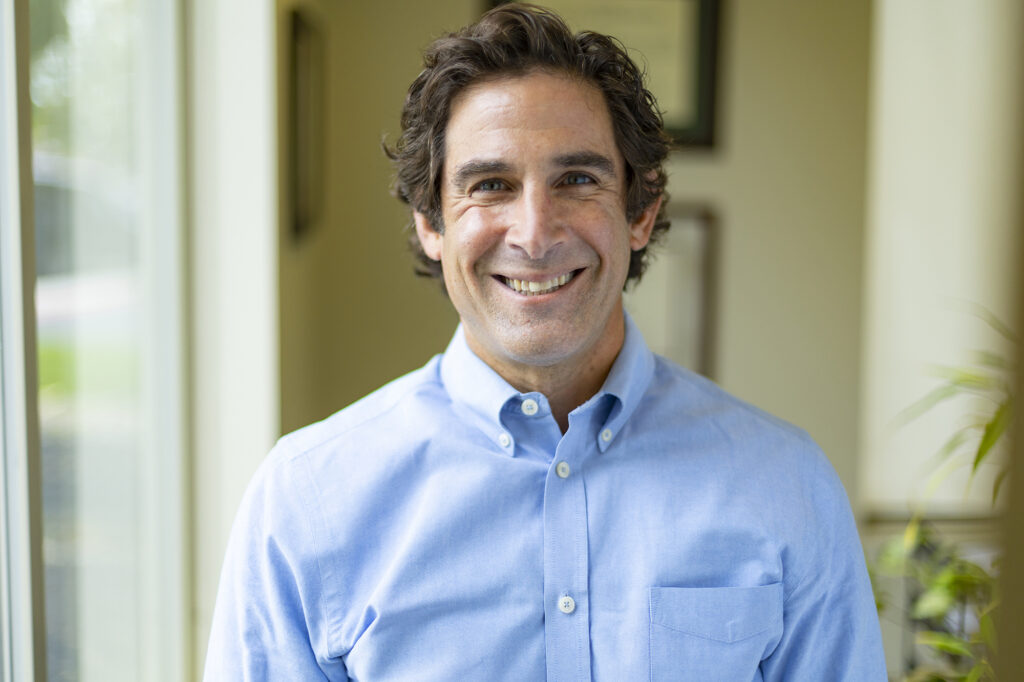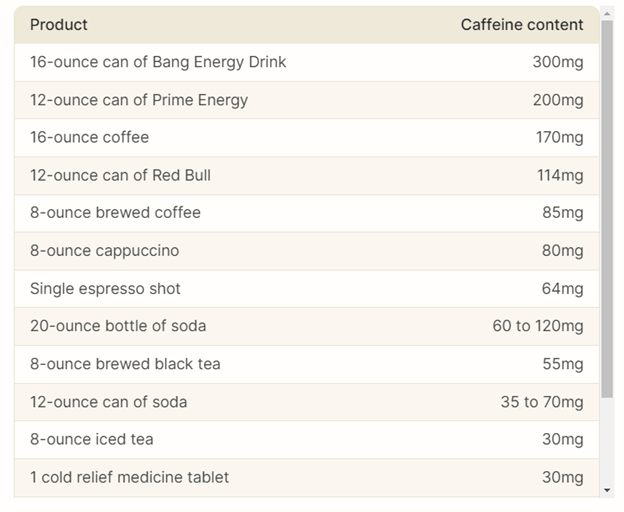Not Just a School Issue, but a National Issue
Many school districts and state legislators in the US are beginning to take notice of this imperative discussion of later start times of our schools throughout the nation. Currently California and Florida are the only states with laws on the books, with California beginning in 2022, and Florida requirements being enacted by July 2026. In fact, lawmakers in Connecticut, Maine, Massachusetts, New Jersey, New Mexico, New York, Oregon, and Texas all had bills up this year, according to Start School Later, an advocacy group that tracks the bills. There has been legislation proposed in 25 states, including Idaho where legislators are beginning to review the benefits of later school times.
Why are Later School Times Being Proposed?
According to Start School Later*, “Returning to later, healthier, safer, evidence-based school hours is a reform with the potential to improve the health, safety, and academic achievement of all students. What are we waiting for?”
*Who is Start School Later group?
*Start School Later is an advocacy group that tracks state bills, brings together a coalition of sleep scientists, educators, parents, students, and other concerned citizens. Their mission is to increase public awareness about the relationship between sleep and school hours, ensuring school start times are compatible for health, safety, education, and equity. [View Website]
“When school systems have moved to later start times, they have found that their students get more sleep. Numerous studies have been done with schools that have shifted to later start times; while individual differences in communities and research methodology have led to different outcomes, results are almost always positive.”
– APA.org (American Psychological Association)

Here are some stats, (many provided by Start School Later group):
- A large majority of American high school students did not meet the CDC’s recommendation for 9-10 hours of sleep per night according to a study of four nationally representative successive samples of American high school students from 2007-2013.
- The CDC’s Youth Risk Behavior Survey in 2019 showed that 77% of U.S. high school students get fewer than 8 hours of sleep on school nights. This is an increase from the 2017 findings.
- A National Sleep Foundation poll found 59% of 6th through 8th graders and 87% of U.S. high school students were getting less than recommended hours of sleep on school nights.
- Over 20% of U.S. middle schools start the school day at 7:45 a.m. or earlier. (American Academy of Pediatrics).
- Shifts in the sleep-wake cycle at puberty mean that most adolescents get their best sleep between 11 p.m. and 8 a.m.
- 20-30% of high school students and 6% of middle school students fall asleep in school each day.
- An estimated 27% of all drowsy-driving-related car crashes involve 16–19 year-old drivers. (AAA foundation, 2018)
- Schools with start times before 8:30 a.m. had 10–11% higher odds of students attempting suicide compared to schools with late start times. (NIH, 2021)

How do Early School Times Affect Sleep?
Over 10% of U.S. high schools currently start before 7:30 a.m., 43% start before 8 a.m., and under 15% start after 8:30 a.m. Over 20% of U.S. middle schools start class at 7:45 a.m. or earlier. Bus pick-ups start as early as 5 a.m. in some districts, and teens must wake at 5 or 6 a.m. to get to school on time. The school day ends around 2-3 p.m., on average and then there is homework, sports, and extracurricular activities … all leading to a huge sleep debt for our teens and school-aged children. This does not account for many adolescents, teenagers and young adults who stay up late to play online games, text or talk with friends, browse the internet, and use social media.

Staying up late is more than an inclination or habit for teenagers, but this tendency has biological and physiological roots. The sleep-wake cycle is governed by both the homeostatic drive for sleep (Process S) and the circadian rhythm (Process C).
- Process S builds during wakefulness and makes you feel tired. This process weakens during adolescence.
- Process C helps the body determine when the right time for sleep is. It naturally shifts later during adolescence. This is called Delayed Phase Preference.
- Process S and Process C heavily influence mood and learning abilities. While they are interconnected, fixing an issue with one does not mean that an issue with the other will be resolved.
[Schmidt, C., Collette, F., Cajochen, C., & Peigneux, P. (2007). A time to think: Circadian rhythms in human cognition. Cognitive Neuropsychology, 24, 755–789.]
[Tarokh, L., & Carskadon, M. A. (2009). Sleep in adolescents. In Squire, L.R. (Ed.). Encyclopedia of Neuroscience, 8, Oxford Academic Press, 1015-1022]
“A major, multi-state study conducted by researchers at the University of Minnesota and the U.S. Centers for Disease Control and Prevention linked later high school start times to significant decreases in teen substance abuse, depression, and consumption of caffeinated drinks.”
– CDC.gov
How Much Sleep Do Students Need?
| How much sleep someone needs depends on their age. The American Academy of Sleep Medicine has made the following recommendations for children and adolescents: | |
| Age Group | Recommended Hours of Sleep Per Day |
| 6–12 years | 9 to 12 hours per 24 hours |
| 13–18 years | 8 to 10 hours per 24 hours |
| *Chart provided by the CDC | |
What are the Health Risks for Early School Times?
This schedule prevents many of our students and even young educators from getting the required 9+ hours of sleep per night that growing brains and bodies need. Getting an average of 5-7 hours of sleep, sometimes less if the teens or young adults stay up later, deprives these adolescents of a critical part of their sleep cycle, which is the REM sleep, or Rapid-Eye-Movement sleep. REM sleep processes the following benefits: memory consolidation, emotional regulation, rest and repair of your brain, strengthening of your immune system, and wakefulness preparation.
And what happens if a developing brain is deprived of REM Sleep? A lack of sufficient and quality sleep can have dramatic effects on an adolescent’s life, with a lengthy list of repercussions including:
- Risk of mental health disorders including depression, anxiety, and low self-esteem,
- Poor academic performance at school,
- Higher risk of Obesity and type 2 diabetes,
- Increased risk of Substance abuse and consumption of caffeinated drinks**,
- Lack of focus, with an increase of attention deficit disorders,
- An increase of accidents and injuries,
- Decrease in social skills, including an increase of negative interactions with friends, family, teachers, and school mates, or even withdrawal from social interactions altogether,
- Poor memory recall, which will further compound academic grades and performance,
- Irritability and feelings of being overwhelmed, frustrated and even hopeless,
- And obviously, increase of daytime sleepiness, falling asleep in class or during study.
What are Health Benefits for Later School Times?
Numerous studies have been conducted with schools throughout the country to observe the differences when start times are shifted. Outcomes varied because of the differences in the communities observed and the research methodology utilized, but the results were always positive. Here are some of the proven benefits for school-aged students:

- Increased attendance rates
- Decrease in disciplinary action
- Decrease in student-involved car accidents
- Increase in student GPA
- Increase in state assessment scores
- Increase in college admissions test scores
- Increase in student attention
- Decrease in student sleeping during instruction
- Increase in quality of student-family interaction
- Decrease in suicide rates of those in grades 9 through 12
These benefits are from studies of delayed start times in schools and districts across the country in Colorado, Connecticut, Kentucky, Minnesota, Missouri, Rhode Island, Virginia, & Wyoming, including urban, rural, and suburban environments. [See studies.]
There is also a plethora of research showing the health benefits of sufficient sleep for young ones with growing minds and bodies:
- Memory & learning
- Attention
- Emotional regulation
- Mental health & well-being
- Weight control/Body Mass Index (BMI)
Why are Later School Times being debated on a national stage?
As with any hotly debated topic, money is usually at the root of it and in this case, some schools have argued logistical complications, that in turn cause more spending. So here are some ‘downsides’ of later school times:
- Increased cost, congestion, and delays associated with having buses on the road later in the morning.
- Inability of parents to rely on older children for afternoon childcare, as the lower schools would have effectively switched schedules with the upper schools.
- Scheduling conflicts for intervarsity/interscholastic events with neighboring districts that have earlier dismissal.
Some legislators have raised concerns regarding costs, especially for smaller school districts. The issue revolves around a later school time for high schools, which would run closer to elementary and middle school, thus meaning running more buses. And one school district representative says that while initially the state legislators will set aside funds to cover the costs of transportation, the state will often push things down to the local school districts eventually. One Florida state representative even went on to say, that despite the benefits to students, “The cost outweighed the benefits.”
Other less income-based but legitimate concerns include:
- Difficulty in squeezing in sports practices and extracurricular activities. Later school times mean later end times, and less time after school for these events.
- Disruption in parents’ schedules. Considering the parents’ work schedules, a later start time may cause problems in the household schedule.
- After-school tutoring may be less accessible. One-on-one tutoring and after-school programs may not have the ability to adjust their schedule, around their staff’s availability.
- Reconditioning of families and students, who have become accustomed to the early bell. The initial adjustment period may cause some disruptions in the families’ schedules.
- Additional childcare costs for working parents. As the day is extended to accommodate later school times, this could pose challenges for working parents, who may need before and after-school childcare and transportation.
Overall, the later school times have benefited students, for the school districts who have experimented with it or implemented it. Yet, the concerns regarding limited school budgets and resources have continued to cause debate over this issue in school districts, as well as in the state and federal government.
While the economic impact of later school times has been well studied, the cost-savings have not been widely discussed.
RAND Study on “Later School Start Times in the U.S. – An Economic Analysis”
“A 2017 report by the RAND Corporation found that moving all middle and high schools to 8:30 a.m. start times or later would bring enormous economic benefits to communities and states–in as little as two years.”
– Start School Later group
This RAND 2017 study showed an economic gain of $8.6 billion to the U.S. economy in just two years, and with this increasing to $140 billion after 15 years. This increase was studied with the factors of
- (1) impact on the public health system,
- (2) higher academic performance of students and
- (3) reduced car crash rates.
Yet if the study included a lower suicide rate, a decrease in obesity and resulting comorbidities, and a decrease in mental health issues, the end-result of cost-savings would be much higher.
As a Sleep Physician, How Do You Feel About Later School Times?
Dr. Mark Rasmus M.D., of Everything Sleep Idaho, is dedicated to public education about sleep matters. Dr. Rasmus has appeared on television and frequently speaks to community groups and physicians. He has conducted clinical research and has published articles on sleep disordered breathing and CPAP humidification. Further research projects focused on the relationship between cardiovascular disorders and sleep disordered breathing. His expertise allows the Idaho Sleep Health staff to deliver the best possible care to patients of all ages with sleep disorders.

With a specialty in sleep medicine and years of experience treating sleep disorders in adults, adolescents, and children, he can attest to the detrimental effects of sleep deficiency. He is in favor of later school times. He carefully reviewed the research and studies, both for and against, before coming to this conclusion. With an effort to provide each patient with the attention and support they deserve, he would be more than willing to share his conclusions and personal observation of school-aged minors’ sleep deprivation for several reasons, one including the early school start times within Idaho.
“In my opinion, delaying school start times in middle and high school aged students is the lowest hanging fruit in regards to improving mental health and performance for our students. The science behind making the change is concrete and the data clearly shows that it is cost effective over the long run.”
– Mark Rasmus, M.D., Medical Director of Everything Sleep Idaho
A Better Night’s Sleep for Your Child
If you suspect your child or teenager is experiencing symptoms of sleep deprivation or deficiency, please call our new clinic in Boise, ID at (208) 884-2922. Our sleep clinic, Everything Sleep Idaho, is a medical facility specifically designed to diagnose and treat sleep disorders. We are staffed by healthcare professionals trained in sleep medicine, including sleep physicians, sleep specialists, respiratory therapists, and polysomnographic technologists.
We provide a customized, state-of-the-art approach to each and every patient, young or old. We look forward to working with you on getting your child a better night’s sleep and all the benefits that come with that.
**Supplementary Information: High-Caffeinated Drinks & Teens

How do these high-caffeinated drinks and energy drinks affect teens?
Teenagers (13-18 years of age) are still developing in body and mind, and while studies are being conducted on teenage consumption of energy drinks, not all is yet known. Yet initial reports find that high doses of caffeine can impair cardiovascular function, nervous system function, and overall mental and physical health. Some recent studies have shown that too much caffeine, especially in one serving, can have particularly detrimental effects on developing minds and bodies.
The U.S. Food and Drug Administration (FDA) advises that healthy adults stick to no more than 400 milligrams of caffeine a day. However, the recommended daily limit for adolescents between the ages of 12 and 18 years old is much lower: 100 milligrams. Some energy drinks contain two or three times that amount of caffeine in one serving.









